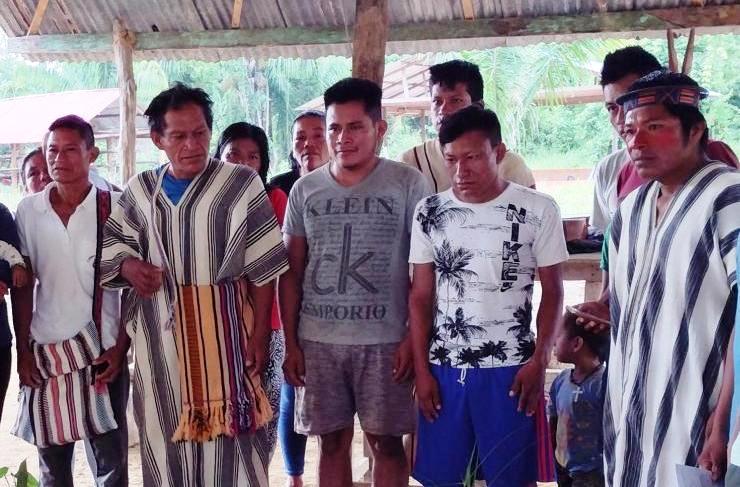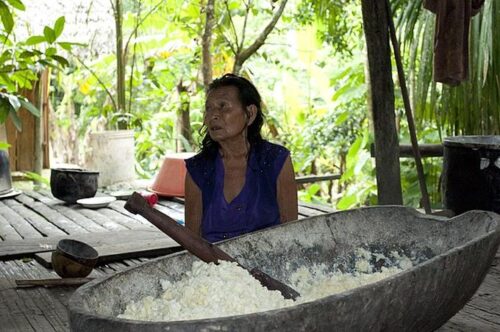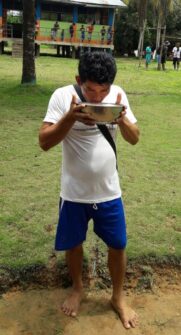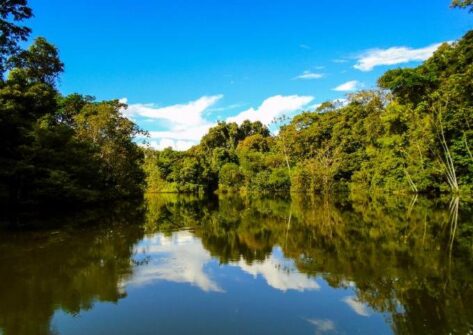The Role of Masato in the Peruvian Amazon.

Masato is the typical and preferred drink of the Asheninka, the Shipios and other indigenous groups of the Peruvian Amazon. Masato is a fermented drink based on yucca, which is a big tuber also known as cassava, its ancestral name is piarentsi.
In some regions of South America Masato can be prepared with other ingredients such as corn or rice and they are not fermented. Its origins date back to the history of the ancestral peoples of the Amazon.
This drink is often associated with cultural and spiritual values among the Amazonian ethnic peoples. There are different methods to prepare this drink. According to Mirian Pérez, an Asheninka woman: “Cassava is peeled and boiled until it is soft. Once soft, you drain the water and mash it in the same pot with a wooden masher, which is made just for this purpose. The brewers, generally indigenous women, who stick to the traditional and original process, chew portions of cassava and then mix them again with the rest of the dough, in order to speed up fermentation. Finally, the jar containing the cassava is covered with banana leaves and left to ferment for three days. At this time the drink is ready, but it has still a sweet flavour given by the cassava starches. From the fourth day the drink becomes strong masato, its alcoholic content is higher, and one can really get drunk with it”.

Preparing masato. CC BY-SA 2.0/Diego Giannoni
In less traditional methods some brewers forego the chewing process altogether. Instead, they add grated raw sweet potato. This helps to increase the amount of sugars and starches in the mix or combination of products. Therefore, fermentation is possible in a faster and natural way. Bonifacio Pezo, who is one of the great leaders of the Asheninka, reveals to us a third method to help fermentation. According to him, one can speed up the fermentation process by using germinated corn: “The newly grown corn plant is ground and then mixed with the (yucca) dough. After that, it is left to ferment for two or three days uncovered. Once the dough has fermented, it is mixed with water and sieved, and finally served to drink.
According to the Asheninka, there are four types of masato made from cassava: masato mixed with sugar or honey, mixed with cane juice, mixed with sweet potato, and chewed masato. In addition, apart from the masato made from cassava, there are also other types of masato such as the pijuayo masato, and the chonta masato. The preparation of masato may vary among the several Amazonian tribes.

Masato is the first thing an Ashaninka wants after hours of walking or working.
According to oral narrations, the masato ritual was carried out at the time of the cassava harvest to give thanks to God. It is said that this drink was destined for sacred times and festive moments of the indigenous communities. Piarentsi was made for special occasions such as mijanos, birthdays or other family or community gatherings. It is considered as a sacred drink for rituals. That’s why this drink was prepared by maidens after they had reached puberty. The preparation of masato was also linked to marriage. A young man who intended to marry a girl would go into the jungle to hunt in order to show that he was ready to start a family, and in the meanwhile, the chosen girl prepared piarentsi. When the suitor arrived at the girl’s house with the mitayo (game), she offered him a bowl of piarentsi, thus starting the family agreements and the preparation for the wedding.
Nowadays, masato, among the indigenous communities of the Amazon region, is still prepared and offered on special occasions such as birthdays or mingas (community work). During the patron saint festivities or anniversaries of the community. As a typical drink, masato cannot miss at social events.
Soccer championships, the so-called penalties and chengaritos (sports where players kick penalties only), or other activities that have the purpose of raising funds either for the community or for the schools, are other occasions to prepare and offer masato.

Amazon River. 123rf.
Masato is the first thing an Ashaninka wants after hours of walking, or working, it is the first drink that an Ashaninka offers as a welcome drink to a relative, a friend, or a neighbour that has come to visit. The inhabitants of the cities of the Amazon region, instead, consider masato as just the typical drink of the indigenous people, a drink for just a good bender. That is why talking about masato is almost always a reason for jokes, mockery, and contempt towards Amazonian cultures. The people of the cities joke and emphasize the repugnance of the chewing for the preparation of this indigenous drink, without understanding that this habit is a great solution in the context of the rural world, where everything is scarce.
Masato, among the indigenous people of the Amazon region, is the integrating element that strengthens social and spiritual relations. It is the drink that better quenches thirst after a hard work or a long and tiring journey. It is the drink that accompanies community dialogue, during which the members of the indigenous communities talk about different political, social, and cultural issues. It is the drink that is offered to welcome visitors, friends, and relatives. Drinking masato together, to the indigenous people of the Amazon, also means sharing each other’s experiences, narrating ancestral stories, and making plans for the future of their family and their community while keeping alive the past and its traditions and values.
Jhonny Mancilla Pérez



